Red Hat Enterprise Linux (RHEL) is a Linux distribution focused exclusively on the corporate segment, giving users various functions at the level of security, performance, stability and performance, which is why it is popular in the server segment..
RHEL recently launched a beta version of the RHEL 8.2 edition which will be officially launched in a few months. This RHEL 8.2 Beta version allows you to register the system, attach RHEL subscriptions, as well as install from Red Hat Content Delivery Network (CDN) before installing the package.
Something to keep in mind is that the size of the ISO image has been reduced to a size of only 600 MB facilitating its portability..
News or improvements RHEL
Among the novelties or improvements that we find in this new version of RHEL we find:
- The Tuned system adjustment tool has been updated to version 2.13 with which we now have support for independent architecture adjustment and multiple inclusion directives.
- At the security level, we emphasize that now cryptographic policies can be customized, so as administrators we can define a complete policy or modify only certain values ​​of it without affecting it in its entirety.
- RHEL 8.2 integrates the setools-gui and setools-console-analysis packages which give us specific tools for SELinux policy analysis and data flow inspections.
- SCAP Security Guide is added with which it is possible to create a profile based on the ACSC - Australian Cyber ​​Security Center.
- Updated programming languages ​​such as Python 3.8 and Maven 3.6.
- Compiler tools have been updated to versions such as GCC Toolset 9, Clang and LLVM Toolset 9.0, Rust Toolset 1.39 and Go Toolset 1.13.4.
- Possibility of registering the system in Red Hat Insights during installation.
- Possibility of updating blueprint in the GUI for Image Builder if an error is generated when resolving dependencies.
- The Identity Management feature has been incorporated with a new command line tool called Healthcheck which allows us to detect problems that have a direct impact with IdM environments.
- Image Builder has startup support in the cloud to create Azure images.
- All dnf-automatic.timer timer units will now use the real-time clock by default.
- Identity Management is compatible with Ansible roles and modules designed for installation and administration.
- graphviz-python3 is now distributed in the CRB repository.
- Powertop has been updated to version 2.11.
- The web console underwent a new edition in order to make use of the PatternFly 4 user interface system design and a session timeout has been added for security level improvements.
- BIND supports .GeoIP2 instead of GeoLite Legacy GeoIP.
- SCAP Security Guide now supports ACSC Essential Eight.
- At the desktop level the GNOME Classic environment has been established.
- rsyslog has been updated to version 8.1911.0.
- Audit adds kernel improvements v5.5-rc1.
- The user space applications are in the ability to retrieve the network identification selected by the core.
- The Direct Rendering Manager (DRM) kernel graphics subsystem has been edited to be compatible with version 5.1 of the Linux kernel.
- Firewalld was updated to version 0.8.
- The ndptool command can now specify a destination address in the IPv6 header of the network.
- The rules for the firewalld service provide a management option for service connections that are executed on a non-standard port.
- Whois is now available in RHEL 8.2.
- RHEL 8.2 adds Extended Berkeley Packet Filter (eBPF) which is a virtual machine in the kernel facilitating the execution of code in the kernel space, it is a restricted environment of isolated space with access to a limited set of functions.
- Adding a new command to show the relationships between resources and many more functions.
RHEL 8.2 installation
RHEL 8.2 can be installed in architectures such as:
- IBM Power Systems, Little Endian
Red Hat Enterprise Linux 8.2 main repositories
Red Hat Enterprise Linux 8.2 is distributed in two main repositories that are:
These two repositories are essential for a basic installation of RHEL 8.2 and we find them available in all RHEL subscriptions
To download the beta version of RHEL 8.2 we must go to the following link and log in or create a new corporate account:
RHEL 8.2
1. How to install RHEL 8.2 on Linux
Step 1
When we download the ISO image, we burn it to a DVD or to a bootable USB. Once we start the team from there we will see the following:
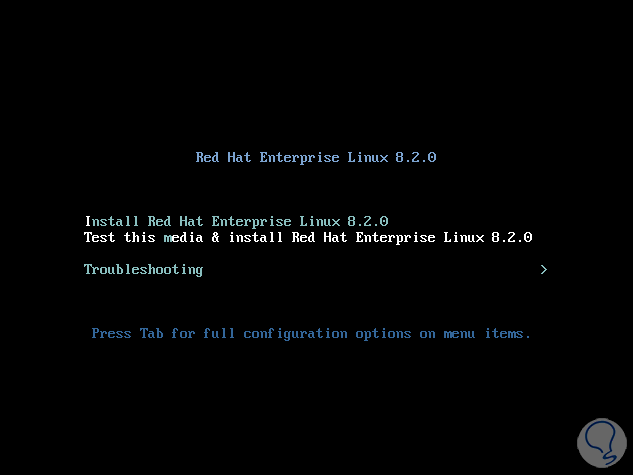
There we can:
- Directly install RHEL 8.2
- Check the minimum hardware requirements
Step 2
Select the “Install Red Hat Enterprise Linux 8.2.0†line and enter. Now we must confirm the installation language of RHEL 8.2:
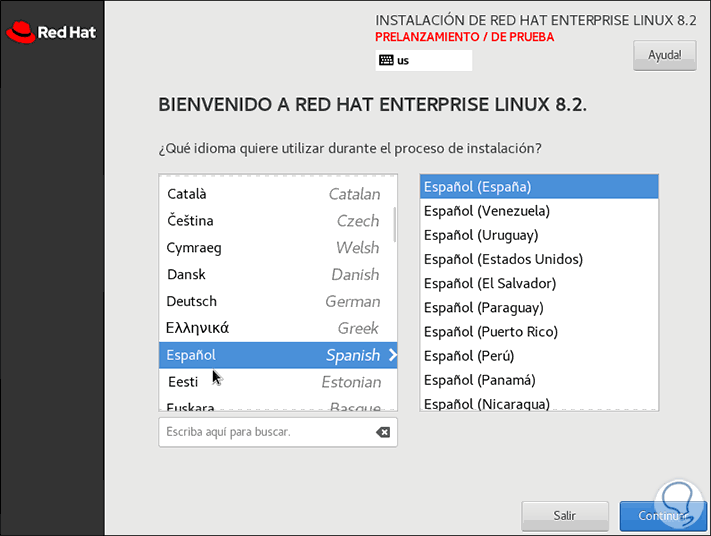
Note
Note that at the top it says clearly "Pre-launch / Test" with which the system can present errors.
Step 3
We click on Continue and we will see a new warning:
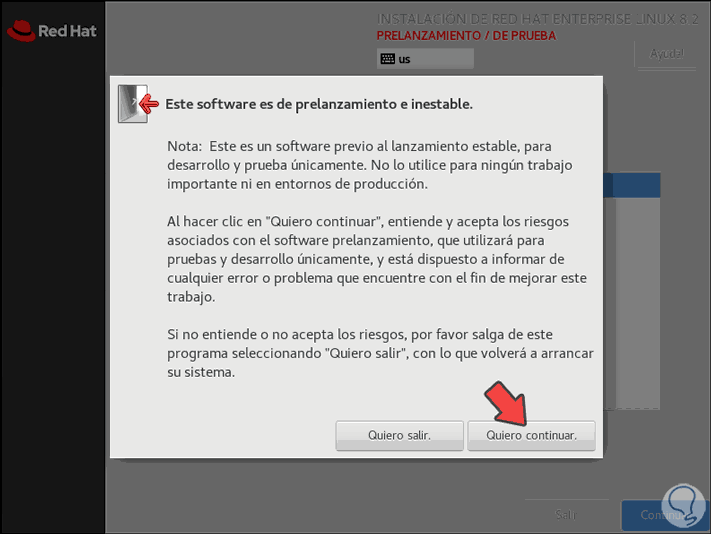
Step 4
We click on “I want to continue†if we are sure and we will see the following:
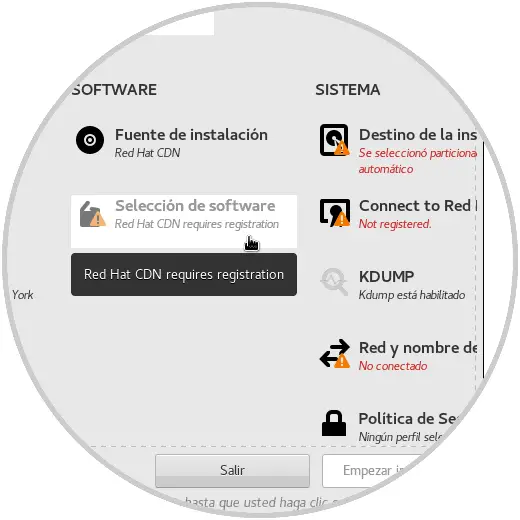
Sections that are with a warning sign must be completed, the elementary options are:
- Keyboard: this option allows us to configure the input language of RHEL 8.2
- Language support: from here we can add more languages ​​to Red Hat
- Date and time: we can adjust the date and time values ​​according to the region
- Installation source: refers to the ISO image that we have downloaded
- KDUMP: is a protection system for memory dump
Step 5
The options that we must edit are:
Destination of the installation
There we select the hard disk where the system is to be installed
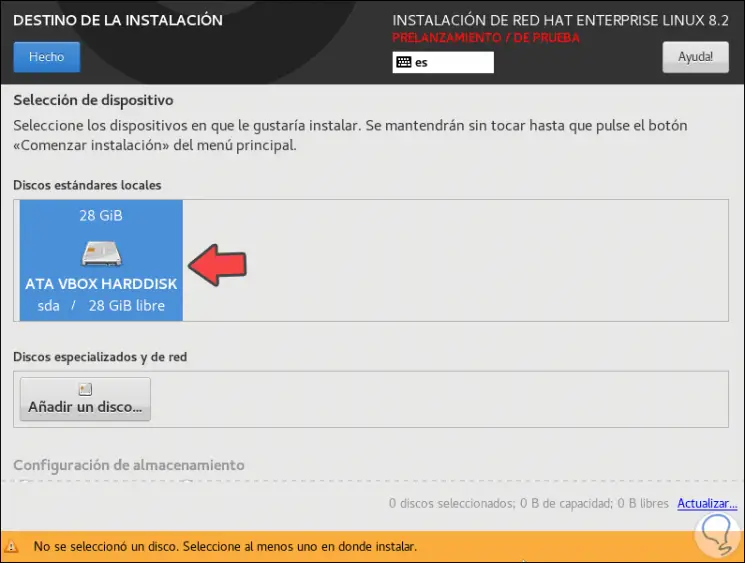
Step 6
Network and team name
Here it is key to activate the network switch to have access to the internal and external network and optionally we can edit the device name
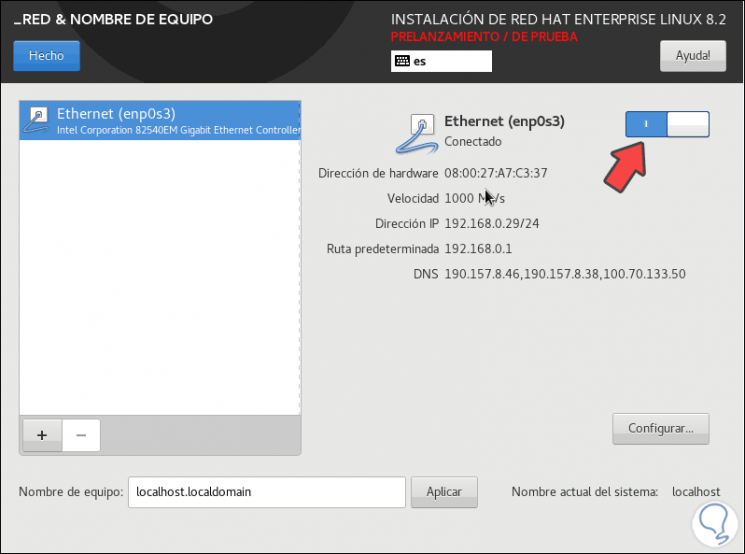
Step 7
Connect to Red Hat
There we must enter the Red Hat user credentials
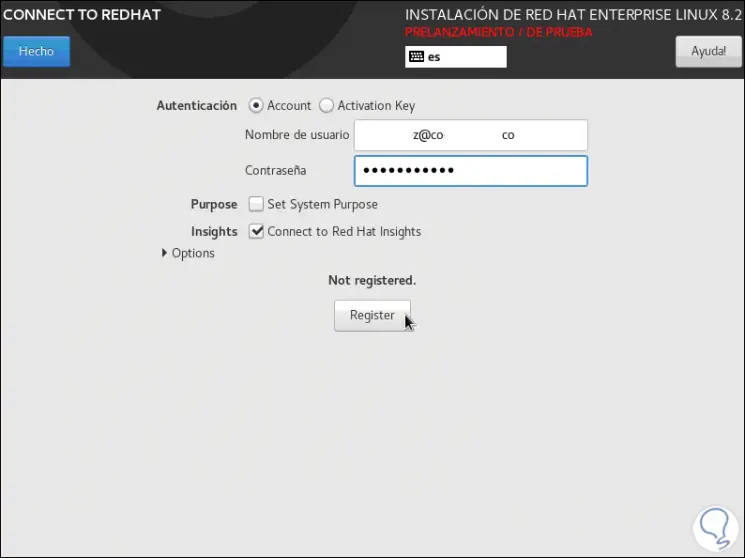
Step 8
We click on “Register†to register the system and we will see the following. We click on "Done" to complete the process.
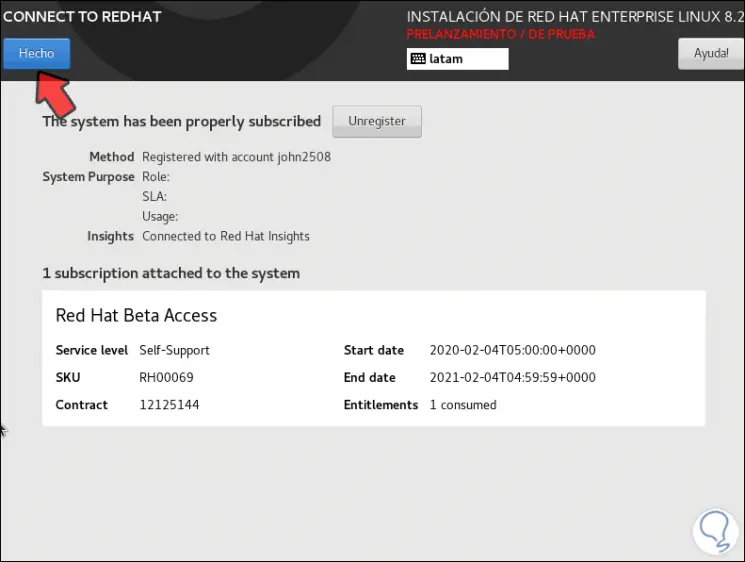
Step 9
Software selection
In this section we can activate the desired boxes to add functions or environments to RHEL 8.2
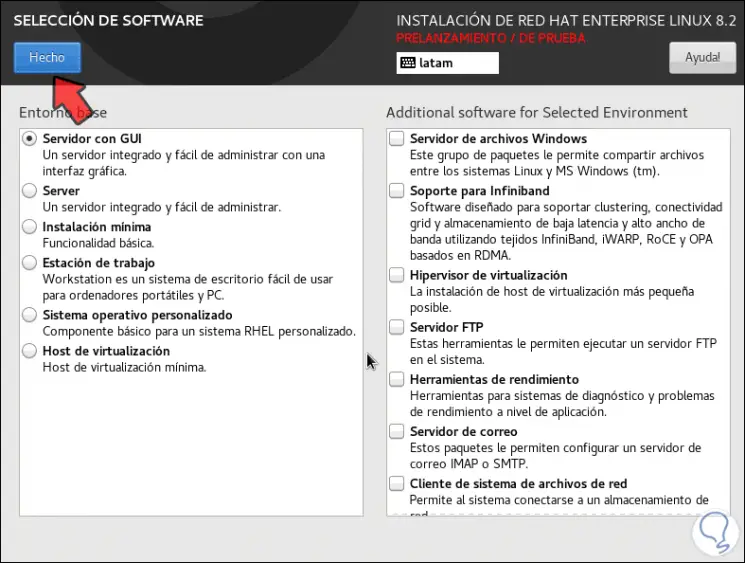
Step 10
Once this is defined, the “Start installation†button will be activated:
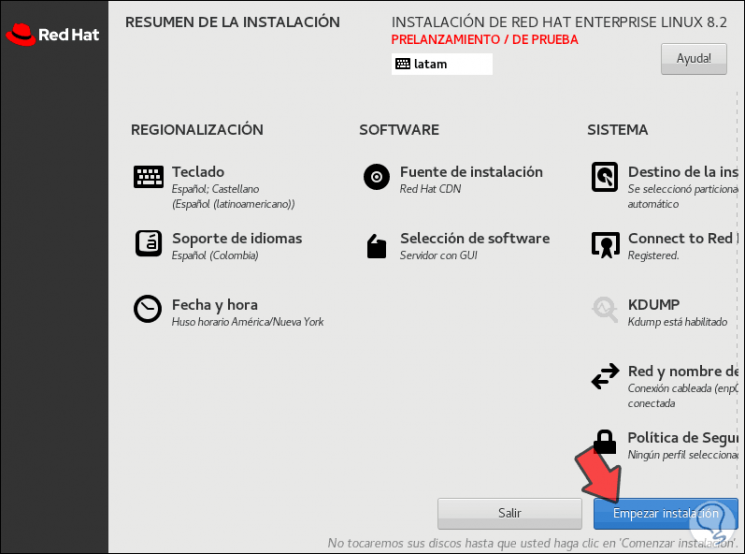
Step 11
We click there and see the following:
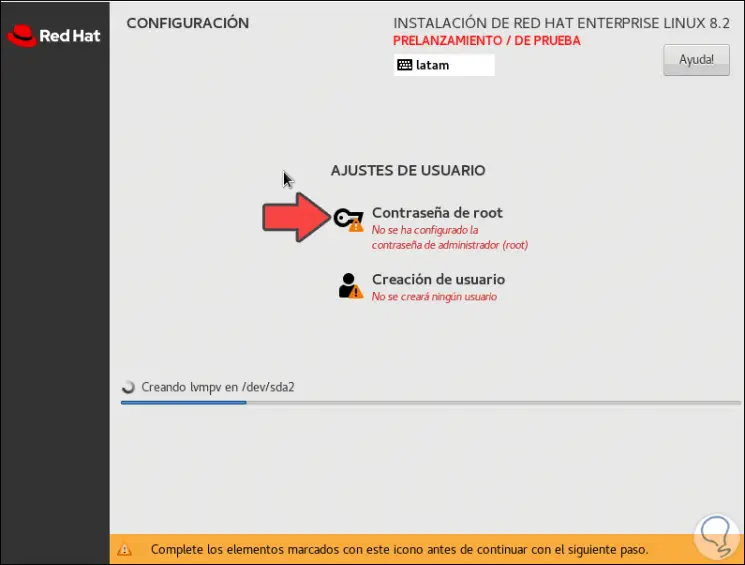
Step 12
First, we will assign the password for the root user:
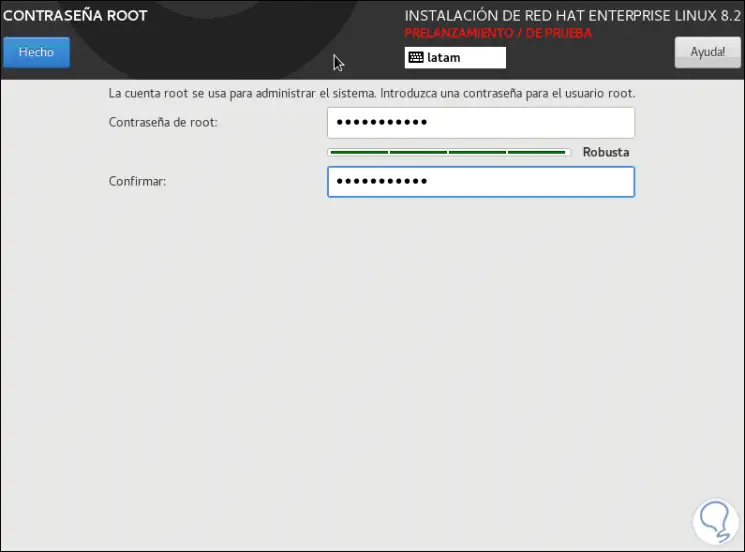
Step 13
After this we assign a different username and password to the root:
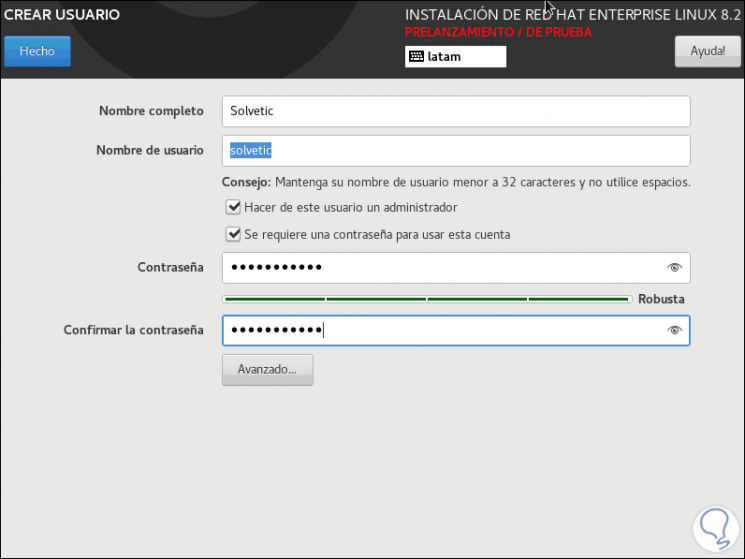
Note
We can activate the “make this an administrator user†box so that you have these permissions.
After this, the download of the official repositories will take place:
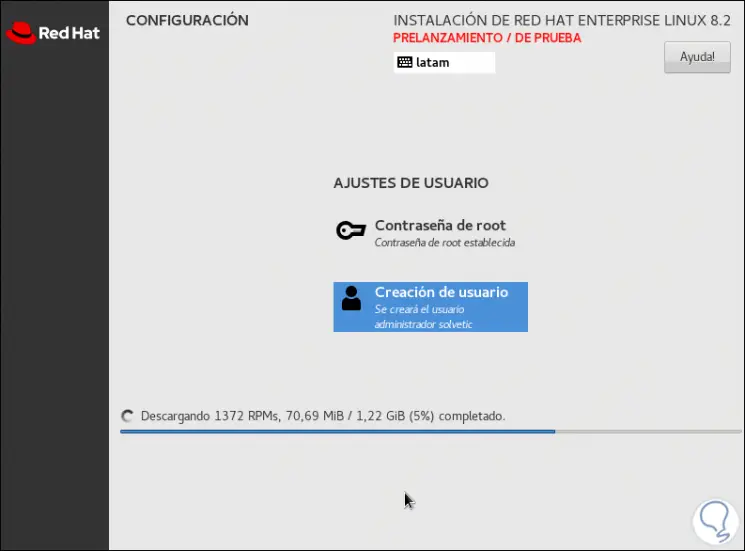
Step 14
At the end of the download, the installation will proceed from the source:
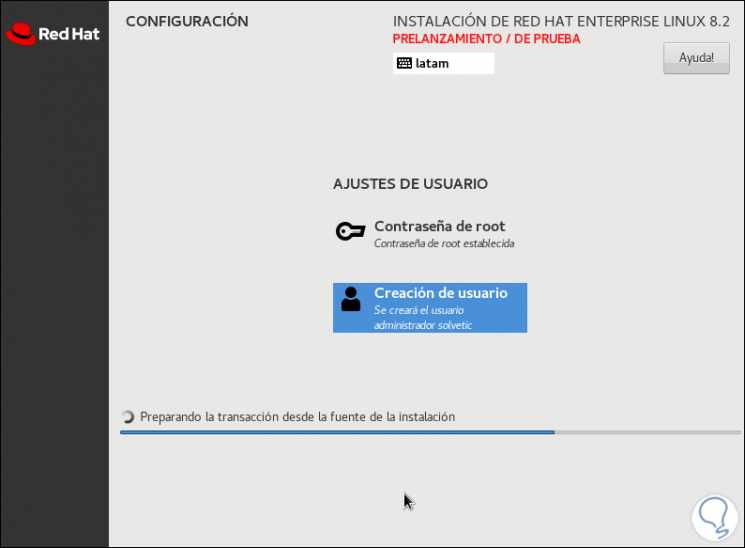
Step 15
Once the installation process is finished we will see the following. We click on the "Restart" button to complete the process.
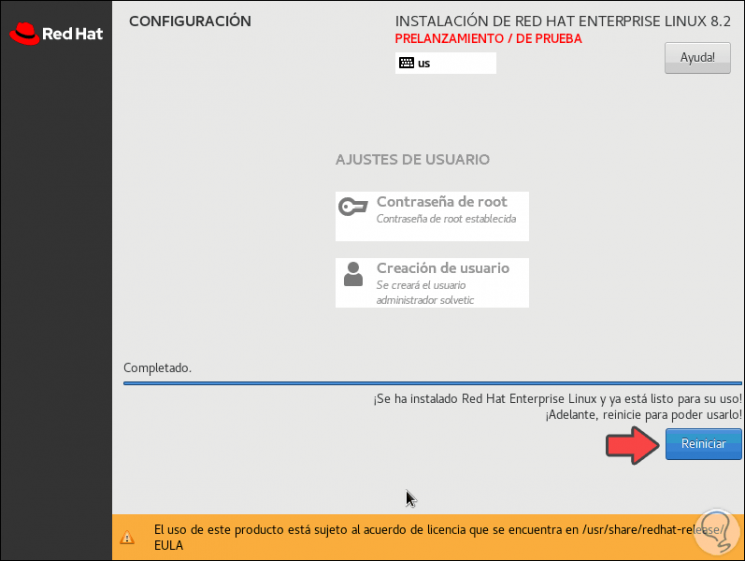
Step 16
The system will be restarted:
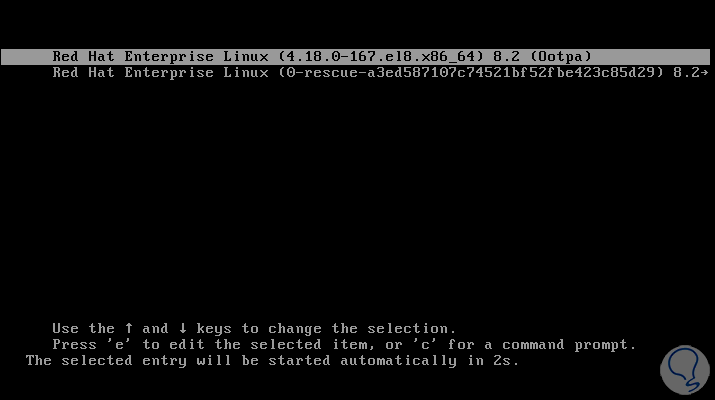
Step 17
After this process we will access the following window. There we click on “License Informationâ€
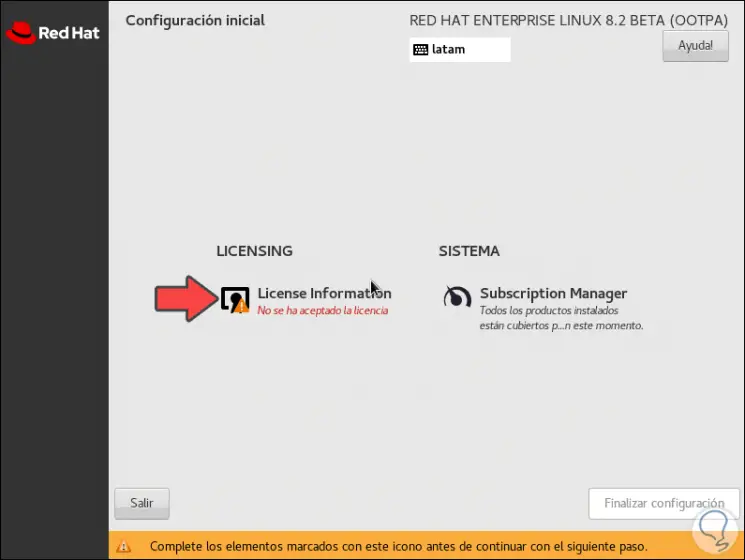
Step 18
In the following window we must activate the license acceptance box:
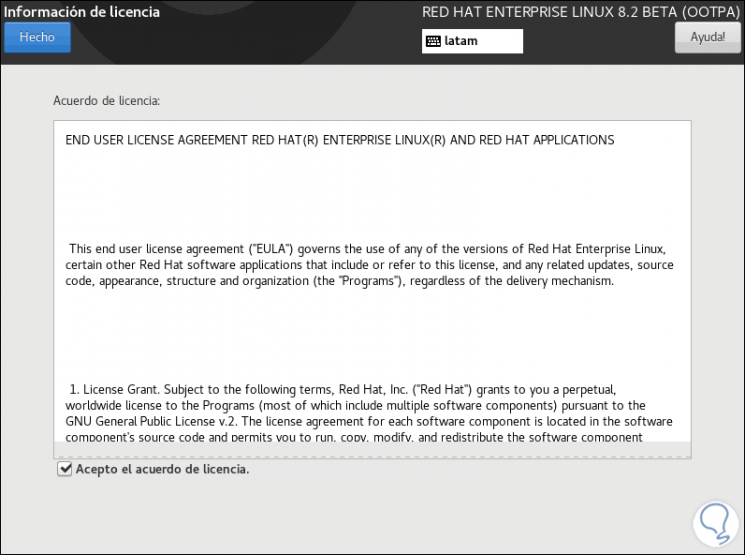
Step 19
We click Done to complete this initial configuration. We click on the "Finish configuration" button
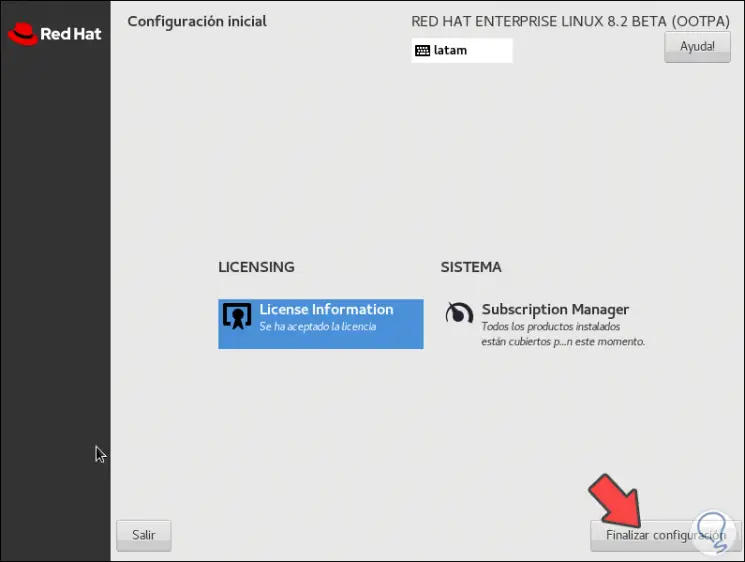
Step 20
The system will be restarted and then we can enter with our credentials:
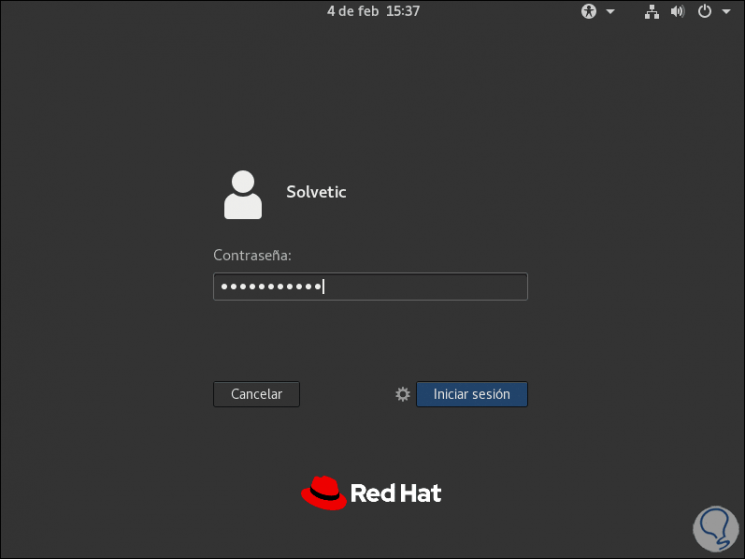
Step 21
We click on “Login†and we will access the Red Hat 8.2 environment. As we can see, some parameters must be completed, such as general language, keyboard language, privacy and more. When this ends we will see the following:
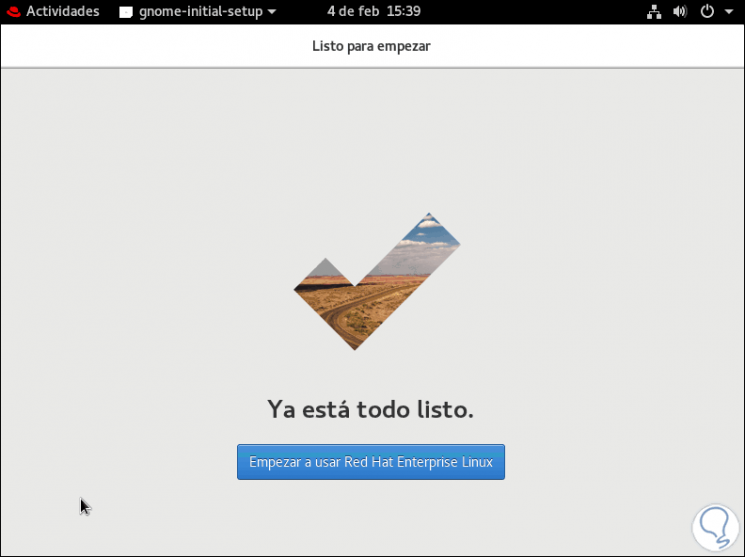
Step 22
We click on “Start using Red Hat Enterprise Linux†to close the wizard and start getting to know this new version of Red Hat:
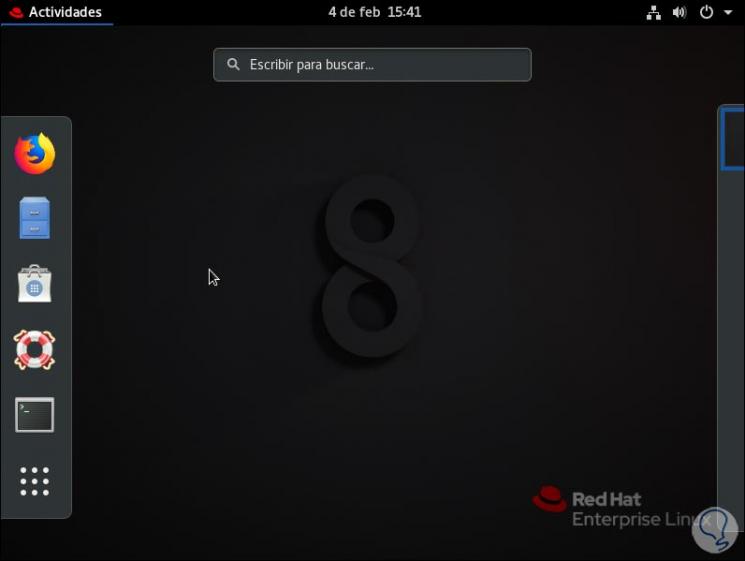
Step 23
We can go to the "About" option to validate that we have RHEL 8.2:
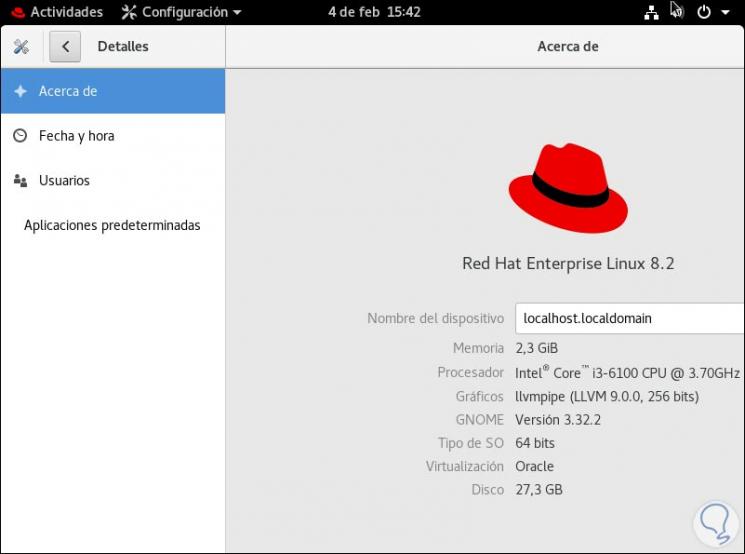
You are able to download this beta version of RHEL and know in advance everything you have for the administrative field of any company with the best functionality.